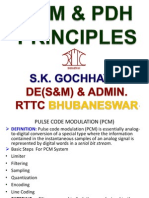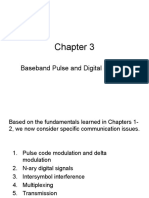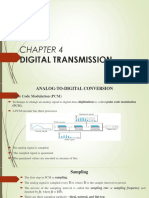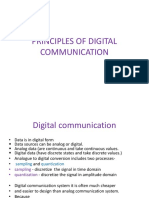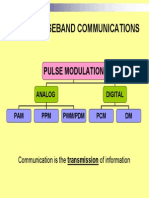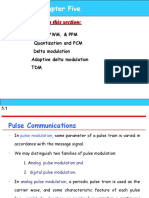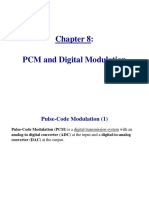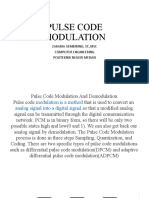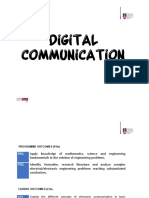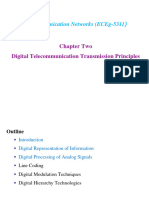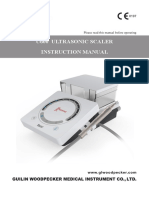0% found this document useful (0 votes)
17 views80 pagesLecture 4
The document provides an overview of Pulse Code Modulation (PCM) and its components, including low pass filtering, sampling, quantization, and encoding. It discusses the Sampling Theorem, methods of sampling, and the advantages and disadvantages of PCM compared to other techniques like Differential Pulse Code Modulation (DPCM) and Delta Modulation. Additionally, it covers concepts such as multiplexing, companding, and line coding, highlighting their importance in digital communication systems.
Uploaded by
AnonymousCopyright
© © All Rights Reserved
We take content rights seriously. If you suspect this is your content, claim it here.
Available Formats
Download as PDF, TXT or read online on Scribd
0% found this document useful (0 votes)
17 views80 pagesLecture 4
The document provides an overview of Pulse Code Modulation (PCM) and its components, including low pass filtering, sampling, quantization, and encoding. It discusses the Sampling Theorem, methods of sampling, and the advantages and disadvantages of PCM compared to other techniques like Differential Pulse Code Modulation (DPCM) and Delta Modulation. Additionally, it covers concepts such as multiplexing, companding, and line coding, highlighting their importance in digital communication systems.
Uploaded by
AnonymousCopyright
© © All Rights Reserved
We take content rights seriously. If you suspect this is your content, claim it here.
Available Formats
Download as PDF, TXT or read online on Scribd
/ 80






